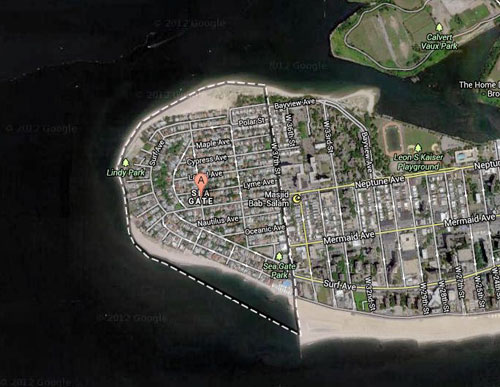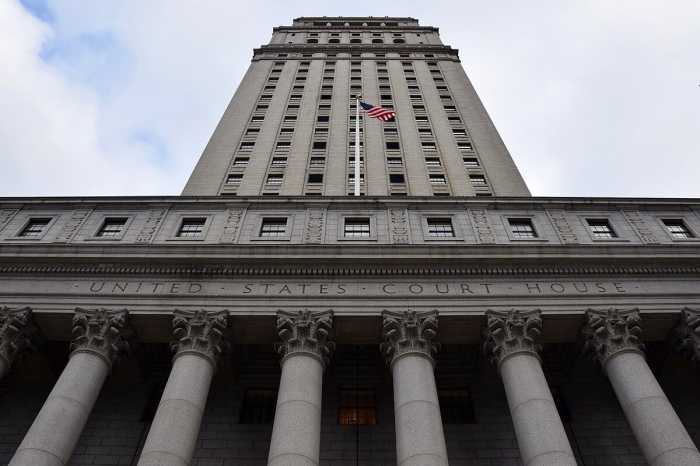Seagate may have to let visitors in if it wants to keep floodwaters out.
The Mayor’s Resiliency Plan — a list of proposals released earlier this week for fortifying the waterfront against future superstorms — calls for the feds to shore up the private community’s Sandy-shattered beaches. But the project comes with one condition — the neighborhood must tear down its fences and let the masses stake their umbrellas on its long-sequestered sands.
Hizzoner’s vision has the Army Corps of Engineers buffering Seagate’s depleted beaches and constructing a protective seawall or range of dunes on the Gravesend Bay coastline.
The mayor’s plan notes that Seagate’s sandy strand melted away over the past two decades as a result of the community’s refusal to take part in a publicly-financed anti-erosion program in 1992 — a decision the neighborhood made because participation would have meant permitting the public to put towels down on its shore. The lack of a beach barrier left residents’ homes exposed to the Sandy’s assault — which the plan warns could happen again.

“Seagate is highly vulnerable to wave action risk,” the proposal reads.
But a new infusion of government funding would force the neighborhood to grant access to outsiders — a stipulation the neighborhood is not sure it is willing to accept.
“We all want to make sure we’re protected, but we have to weigh all options,” said Tami Maldonado, manager of the Seagate Association.
Maldonado said Seagate will hold meetings with residents and the mayor to come to an arrangement.

But some Seagaters said they would be willing — if reluctant — to sacrifice their seclusion for greater security.
“I wouldn’t be happy about it, but if that was the only condition of it, I would say fine,” said resident Ellen Mausner, who lost the back wall of her house during the storm. “It’s scary how close we are to the water.”
The measures outlined in the Resiliency Plan would be in addition to a $30 million federally-funded beach replenishment project in Seagate due to begin later this year — an undertaking that has aroused controversy because it will not require the community to share the restored shore with the public.

Reach reporter Will Bredderman at wbredderman@cnglocal.com or by calling (718) 260-4507. Follow him at twitter.com/WillBredderman.























